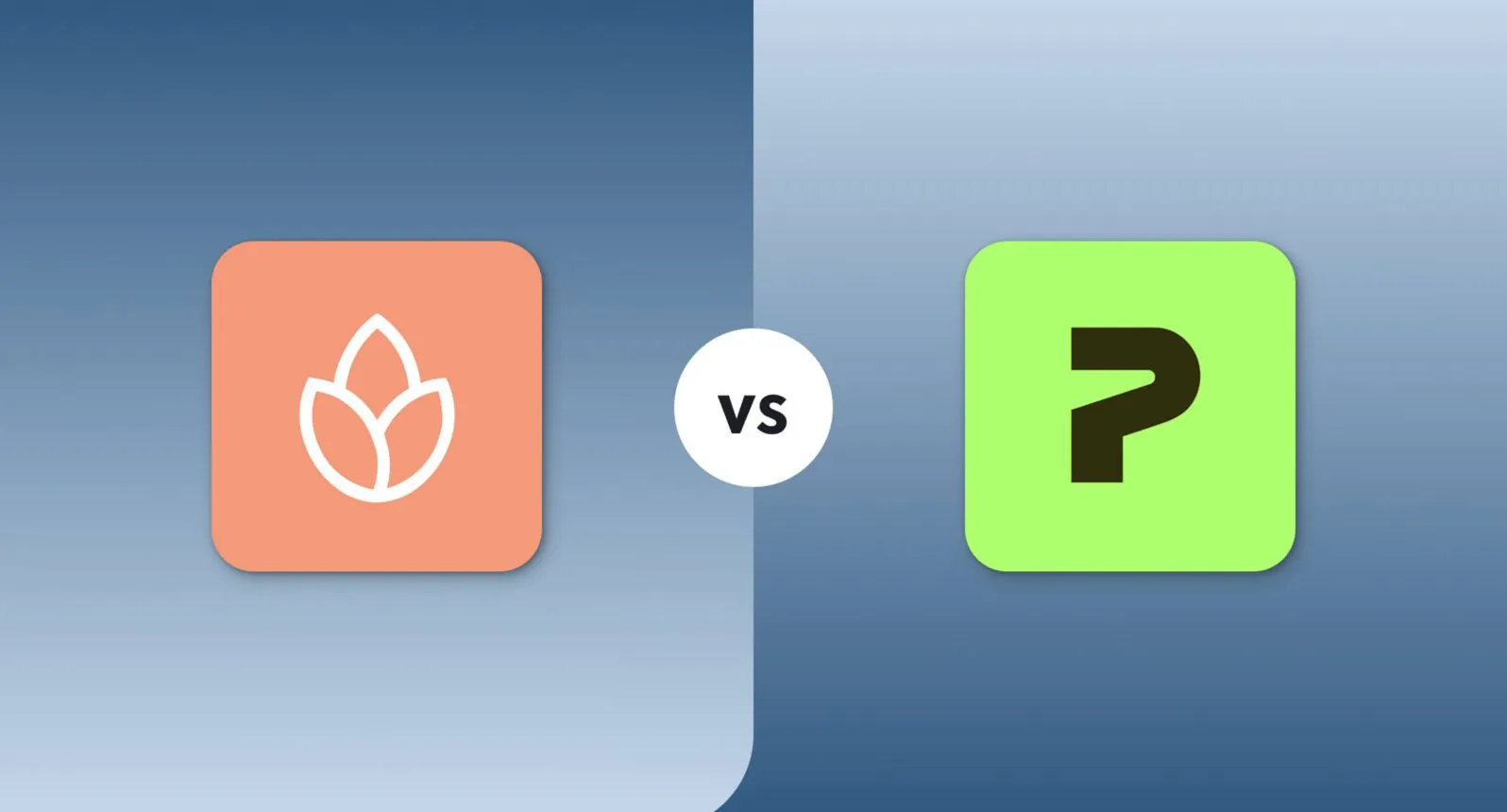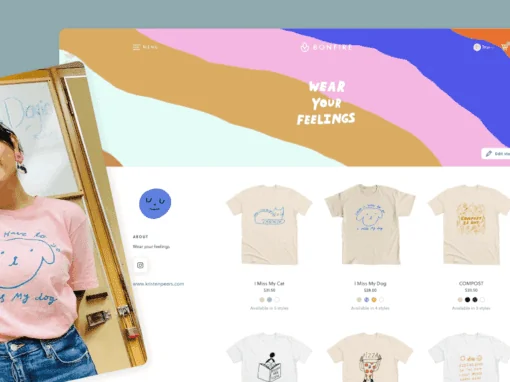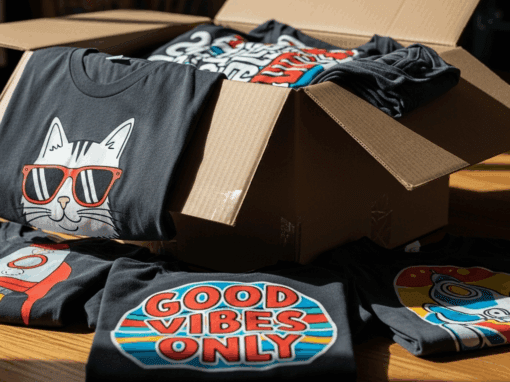When it comes to choosing a fulfillment company for your products, it can feel like an overwhelming task. In this guide, we’ll take a look at both Bonfire and Printify as options, as well as the core decision most sellers face: the choice between consistent quality and built-in fundraising versus lower base costs and a larger catalog. Whether you’re a nonprofit, creator, fundraiser, or e-commerce seller, we’ll help you make the best decision for you and your business.
Once you’re done reading, you’ll be able to evaluate your goals and choose the best fit for you.
Bonfire vs Printify at a glance
Let’s start with the basics. Bonfire uses a campaign-based, batch printing approach with centralized quality control, whereas Printify connects the user to a global network of independent print providers. This quick comparison highlights real-margin examples to determine the best fit between Bonfire and Printify, covering specific use cases like print-on-demand, nonprofit merch, shipping times, quality control, and batch printing.
| Bonfire | Printify | |
|---|---|---|
| Free to use | Yes | Yes |
| Operating model | Campaign-based, centralized production with quality control | Multi-provider network |
| Catalog size | 230 products | 900+ products |
| Fundraising capabilites | Yes | No |
| Custom stores | Yes | Yes |
| Promo codes | Yes | Yes |
| YouTube Product Shelf | Yes | No |
| Shipping times | 7–14 days | 5–12 days, depending on the provider |
When it comes down to it, Bonfire provides better consistency and fundraising, while Printify offers costs savings and a broader range.
Who is Bonfire Best for?
Bonfire is a great option for anyone looking to sell custom merch, but especially for creators and organizations that value consistent quality, low-lift setup, and built-in fundraising tools. These groups find Bonfire easy to use, and the quality makes it a great option for their needs.
Ideal audiences for Bonfire include fundraisers, nonprofits, schools, and community groups who are looking to prioritize proceeds and storytelling. Bonfire is a great platform to get your message across and connect with your community.
It’s also a great platform for creators with an engaged audience who want to offer a limited-time drop. Bonfire’s campaigns can remain open for up to 21 days and are relaunchable.
For those who don’t want to worry about the printing, shipping, and customer support, Bonfire handles all of this for the seller. With a centralized production structure and a stellar customer support team, Bonfire can keep a close eye on quality control, so you can focus on rallying your supporters for your campaigns.
Who is Printify Best for?
Printify is a good option for those who want the lowest base costs, a large product variety, and flexibility when it comes to international providers. New sellers who want to test and vet providers for quality and speed find this to be a great, low-cost option to get started. Vetting providers means placing test orders to check print quality, garment fit, color fidelity, and delivery times, and is essential to ensuring quality is up to your standards.
Due to their expansive catalog, those who want to offer many products beyond apparel and niche items will find their catalog of 900+ attractive. Their partnership with many international printers also allows international sellers to benefit from regional production options.
Pricing, profit margins, and payouts
Pricing
Printify is free to start, but many sellers quickly encounter its Premium plan—a $24.99/month subscription that unlocks access to discounted base product costs and other features. These discounts can improve your margins, especially if you’re processing a high volume of orders. However, the subscription fee is a fixed cost, meaning it only makes sense if the extra profit per sale outweighs the monthly spend.
Bonfire takes a different approach. There are no monthly fees, platform fees, or storefront fees—sellers only pay the base product cost. Whether you sell one shirt or one hundred, you’re never locked into recurring expenses.
This makes Bonfire especially attractive for nonprofits, fundraisers, and creators launching their first campaign. You know exactly what portion of each sale goes to cover production, and everything beyond that is profit. No subscriptions to weigh, no storefront add-ons to calculate.
Pricing Transparency and Complexity
Printify’s model involves juggling:
- Multiple print providers (each with unique costs and shipping rates).
- Optional subscription tiers.
- Possible storefront or integration fees.
Bonfire strips all of that away. There’s a single base cost, visible upfront, and no hidden platform charges. For new sellers, this transparency can reduce financial surprises.
Profit margins
Profits are the amount of money you’ll take home from your custom merch sale. These margins will depend on base costs, discounts, storefront fees, shipping choices, and how you acquire traffic.
You can calculate your profit using this formula:
Sale Price - Base Cost = Profit
While Bonfire can have a higher base cost, you don’t pay any fees, including a monthly subscription or storefront fee, and you get built-in campaign pages. Printify offers a lower base cost and premium discounts, but you will need to pay additional fees for a storefront, which will affect your profit margin, and you’ll need to spend time vetting their providers.
Payouts and timelines
When it comes to selling your merchandise, the time it takes to receive your payout from the sale is a key factor to consider.
Payouts are often connected to production timelines. On Bonfire, your payout will be available for you to request within one business day of your successful campaign batch. For Printify, payouts flow through your storefront, so it will depend on the site you use. You will also need to pay providers for production.
We always suggest keeping an eye on your platform’s help center to stay up to date on its payout policies and timelines.
Product quality and options
As a seller, do you prefer consistent quality control or a larger, flexible catalog?
Bonfire prioritizes quality control with centralized production. Our production team works closely with our printers to ensure our quality standards are met. This creates more consistent outcomes from batch to batch and with every custom order.
Printify currently partners with over 140 printing facilities all over the world. This comes with its own pros and cons, and the quality heavily depends on the provider. There are some premium printers who offer consistent quality, so you’ll want to make sure to sample and monitor the quality of your shirts throughout your campaign.
We recommend ordering samples from 2–3 providers for the same product and design. Then, wash-test prints and measure color shift, cracking, and shrinkage. Lastly, compare hand-feel, sizing accuracy, and print placement consistency. You can document results with photos and notes to build your provider’s bench over time.
Fulfillment and shipping
Delivery expectations can vary by model and provider, so this is something you’ll want to look into when choosing which company meets your needs best. If you’re in charge of your storefront, you’ll want to set timelines clearly at checkout and on product pages.
Production speed and shipping times
Bonfire’s campaign-based model means a 7–14 day shipping window from order to delivery, depending on batch timing. For Printify, fulfillment typically takes 5–12 days, but this timeframe can vary depending on the provider you choose and your shipping address.
The production window is the time from campaign close to print completion before a package gets picked up by the mail carrier.
For those with their own storefront, we suggest listing an order window, a production window, and a shipping window. You can also combine the production window and shipping window for a general estimated arrival date.
For peak times like the holidays, you’ll want to overcommunicate timelines and cutoffs to ensure your customers place their orders within enough time.
International shipping and duties
For international shipping, Printify’s regional providers can shorten cross-border transit and reduce costs for global buyers. If you’re using Bonfire for international buyers, we recommend setting expectations with your customers. Since all orders are printed and shipped from the US, customers may experience a longer transit, as well as potential duties/VAT on delivery.
Set up process
When selecting a provider, we recommend choosing the option that minimizes operational lift while maximizing your goals, whether that’s fundraising, reach, or catalog depth.
Bonfire’s and Printify’s setups operate a bit differently. For Printify, you’ll connect to a storefront (Shopify, Etsy, WooCommerce, etc.), configure products and providers, and set up taxes, shipping, and payments. With Bonfire, you can design, launch, and start selling on a hosted campaign page in minutes—no storefront subscription or inventory required.
Let’s take a look at setup checklists for both sites to compare:
| Bonfire | Printify | |
|---|---|---|
| Step 1 | Upload art | Choose niche |
| Step 2 | Select styles and colors | Pick provider |
| Step 3 | Set price | Create listings |
| Step 4 | Publish | Connect sales channel |
| Step 5 | Share | Test checkout |
Start selling merch the easy way with Bonfire
![]() 100% free
100% free ![]() Easy set up
Easy set up ![]() Fast payouts
Fast payouts
Fundraising and donations tools
With Bonfire’s built-in fundraising, it certainly has its advantages. It’s completely free to launch a campaign on Bonfire, and there’s no inventory required. Campaign pages are designed to tell your story, and you have the ability to direct proceeds right to your cause without dealing with any of the funds yourself. This is a great option for schools and sports teams, nonprofit awareness campaigns, and emergency or memorial fundraisers.
Printify is optimized for e-commerce catalogs, so donations typically require third-party apps or manual workflows.
Hot Tip! If you’re starting a fundraising campaign, we suggest including a one-sentence proceeds statement on campaign pages: “100% of proceeds support [your mission].”
Customer support
For Printify, you manage the customer experience through your storefront and coordinate with the chosen provider on fulfillment. At Bonfire, we handle printing, shipping, and dedicated customer support throughout the process so you can focus on your community.
If you’re managing your own storefront, you want to make sure you clearly request email opt-in at checkout and link to your privacy policy.
Bottom line
With Printify, you’ll get faster international shipping and a lower base cost, but you may sacrifice consistent quality control. You’ll also have to spend additional funds on fees like a storefront fee, and you’ll have to manage your own customer support through your chosen storefront.
At Bonfire, while the base cost appears higher, there’s no monthly fee and no inventory required, making setup quick and easy. You can ensure high-quality control for your tees and a dedicated customer support ready to assist your customers, so you can focus on the success of your campaign.
For the most success, try a hybrid approach and use the best of both platforms for your merch sales!
Frequently asked questions
Do I need an existing audience to succeed on Bonfire?
You do not need a huge audience, but an engaged community helps you reach your goal faster. Bonfire’s campaign pages and storytelling tools make it easier to activate the supporters you already have.
Can I collect supporter emails on Bonfire?
Yes, you can collect supporter emails when buyers opt in at checkout. Use these opt-ins for updates, thank-you notes, and future launches in line with your privacy policy.
Which platform is better for nonprofits and fundraisers?
Bonfire is better for nonprofits and fundraisers because it is free to launch, handles printing and shipping, and centers your story to drive proceeds. Printify is built for e-commerce with extensive catalogs and international product variety.
How do returns and customer service work on each platform?
On Bonfire, we handle customer support and order issues so you can focus on your mission. With Printify, your storefront manages customer service and coordinates with the chosen print provider.
Written by: Katie Davis
Illustrated by: Joe Kelly





